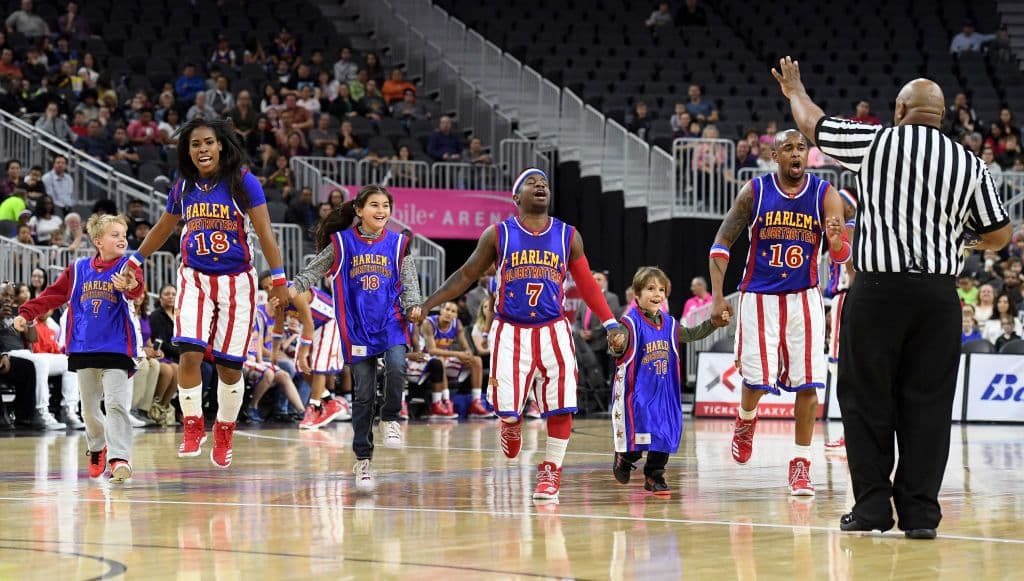Basketball News, Updates and Exclusive Interviews
Get up-to-date news, updates, and exclusive interviews about basketball here. SportsBoom unlocks a wide range of basketball information for you. Learn about the basics of this sport, right from the number of players, the court design, and the rules, and timing. Also, get insight about distinct basketball leagues and tournaments. Generally, all the knowledge and information you need to understand the complexity of basketball is provided right here. Replenish your basketball archives and close any existing knowledge gaps about this prestigious sport. Do not hesitate to open this page to consume the most comprehensive basketball information tailored to your needs.
In his debut season in the CEBL, Tyrese Samuel of the Vancouver Bandits was named Canadian and Clutch Player of the Year. Averaging a double-double, he credits his success to hard work and team support. With his eyes set on the NBA, Samuel aims to improve his outside shot and become a more versatile defender. His basketball journey has prepared him for the next level, with confidence in his abilities to make it to the NBA.
Basketball
Basketball
Basketball
Basketball
Basketball
Basketball
Basketball
Basketball
Basketball
The Rules of Basketball
Basketball is holistically guided by the following principles:
The Court and its Markings
Basketball courts come in different sizes based on the level and type of basketball being played. The dimensions of a basketball court vary depending on the league, but the standard size is 28 meters long by 15 meters wide. Here are some of the dimensions:
- NBA: 94 feet long by 50 feet wide (28.70 by 15.24 meters)
- FIBA: 28 meters long by 15 meters wide (91.9 by 49.2 feet)
- Amateur: Can vary widely, with some older high school gyms being 84 or 74 feet long
Courts are comprised of several foundational components: the baskets, the three-point arcs, free-throw (foul) lines, and the half court line.
The team’s logo is usually highlighted in the middle of the court with other marking such as the Arena’s name and advertising brands featuring on different sides.
The Basketball and the Hoop
- The HOOP: In basketball, the basket is comprised of a hoop (net) attached to a flat backboard (vertical glass board). Regulation basketball hoops are suspended 10’ | 3.05 m from the surface with a rim diameter of 18” | 46 cm. The backboard surface is sized at 42” x 72” | 110 x 183 cm.
- Basketball: Basketball sizes come in variations for different ages, genders, and levels of play. For example, the professional NBA basketball is 29.5” | 74.9 cm in circumference with a diameter between 9.43”-9.51” | 24-24.2 cm. Basketballs have a pressure between 7.5-8.5 PSI and cannot exceed a weight of 22 ounces.
- Basketball Backboards: Basketball backboards are flat elevated vertical boards with mounted baskets, or rims. Regulation basketball backboards have a width of 72” (183 cm) and a height of 42” (107 cm) with an inner rectangle that is 24” (61 cm) wide and 18” (45.7 cm) tall. All rims are hung 10’ (3.05 m) above the court.
- Basketball Rims & Nets: Basketball rims are orange painted goals attached to the backboard in a game of basketball. Basketball rims have an inner diameter of 18” | 45.72 cm. Nets are hung from the bottom of the rim with lengths between 15”-18” | 38.1-45.7 cm. Basketball rims are mounted 10’ | 3.05 m from the court floor.
Scoring and Gameplay
A typical FIBA and Euroleague game runs for 40 minutes, divided into four 10-minute quarters. An NBA game, on the other hand, goes for 48 minutes. There are usually two-minute breaks after the first and third quarters. The second quarter is followed by a 15-minute halftime break.
The offensive team plays with the intent of getting the ball through the opposition hoop or scoring a field goal. Players move the ball around the court by passing or dribbling the ball, abiding by a fixed set of basketball rules. The defensive team aims to stop them and replicate after acquiring the basketball.
There are three types of basketball points scoring system which include:
- Three-point shot: Shooting and scoring a field goal from anywhere outside the three-point line arc wins the team three points. These are referred to as three-pointers.
- Two-point shot: A field goal which is scored from inside the area encircled by the three-point arc in the opposition half is worth two points. These are called two-pointers.
- One-point shot: Points can also be accumulated through free-throws, which are worth a point each. Free throws are awarded to a team when the opposition team fouls.
Major Basketball Leagues and Tournaments
The following are some of the renowned basketball tournaments in the world.
NBA (National Basketball Association)
The National Basketball Association (NBA) is a professional basketball league in North America. It is considered the world's leading professional basketball league, as it features the best basketball players in the world. It consists of 30 teams.
EuroLeague
Euroleague Basketball (EB) is a professional men's basketball league that manages the top European competitions for basketball clubs. The league is considered the top-tier men's basketball league in Europe and consists of 18 teams.
FIBA Basketball World Cup
The FIBA Basketball World Cup is an international men's basketball competition that is considered the most prestigious and high-profile in the world.
It was organized by the Fédération Internationale de Basketball (FIBA), since 1950 and consists of 32 teams.
Olympics Basketball
Olympics Basketball is an international men’s and women’s competition that is a permanent fixture at the quadrennial sporting showpiece i.e. the Olympic games.
The Origins of Basketball
Basketball traces its origins to more than a century ago and has evolved as explained below:
The Invention of the Game
The origin of basketball can be traced to Springfield, Massachusetts in the USA. Dr. James Naismith, a Canadian-American professor of physical education and a physical instructor working at the YMCA International Training School in Springfield, introduced basketball in 1891.
Naismith devised basketball as an indoor sport in order to keep the YMCA athletes in shape, and occupied during the harsh winter months. It involved two peach baskets and a soccer ball with a set of 13 rules.
The Early Days of Basketball
The first game of basketball was a 9 vs 9 contest according to Naismith’s rule book, but over the years, the laws have been changed and fine-tuned to make what we know as modern-day basketball.
The original game did not include dribbling, except for the "bounce pass" to teammates.
Ball movement was majorly made by passing the ball. Eventually, dribbling became an integral part of the game but it was restricted by the asymmetric shape of early balls. This is because the balls had laces that made bounces of the ball inconsistent.
The origin of basketball can be traced to the soccer ball and peach baskets that were used in 1906. Later, they were replaced by metal hoops with backboards.
The Rise of Organized Basketball
The first professional league known as the National Basketball League (NBL) was founded in 1898 and had six teams. Other leagues soon emerged and this coupled with basketball games in American colleges brought stability and organization to the sport.
The Formation of FIBA in 1932 enabled coordination of tournaments and teams and this was fundamental to the globalization of the sport of basketball.
The formation of the NBA in 1946 was also significant to the popularization of the game of basketball, since it created professional opportunities, given that the improved level of talent and competition ensured a structured format was adopted.
The Future of Basketball
The growth and development of basketball is dependent on the following features.
The Global Expansion of the sport
Basketball has grown rapidly worldwide due to a number of factors. New federations have led to the establishment of professional leagues across different continents, bringing rise to a diverse talent pool of players.
The broadcasting and consumption of the basketball digitally, as well as within social media, has enabled the birth of mega businesses and partnerships on a global scale. An example is areas like the China, Philippines, Africa and Latin America.
The Impact of Technology on Basketball
FIBA has also incorporated technology and Analytics, which have a tool for various basketball professionals to monitor, track, guide and train players. This facilitates a broad-based database that has made basketball operation more efficient the world over.
Technology has also been essential in bring on board marketing opportunities and enhancing basketball infrastructure development.
The Rise of Young Talent
The game of basketball has become global. New destinations have cropped up due to international expansion. As a result, the talent pool has been enriching.
The NBA and EuroLeague has seen new dynamic young players take center stage. These players come from different parts of the world.
Some of the best basketball players such as Joel Embiid, Giannis Antetokounmpo, Luka Dončić, Nikola Jokić and Shai Gilgeous-Alexander come from different parts of the world.
The establishment of more professional leagues has made it possible for young talent to be absorbed from underdeveloped regions like South Sudan and Latin America.


